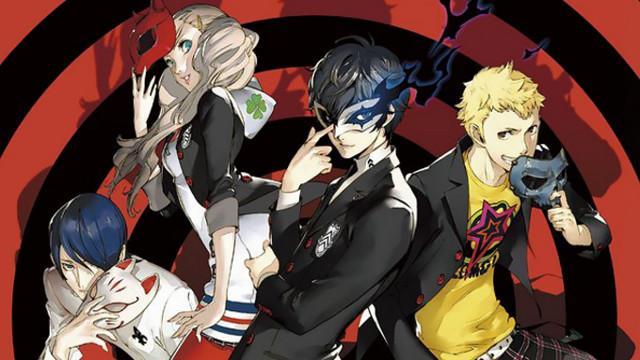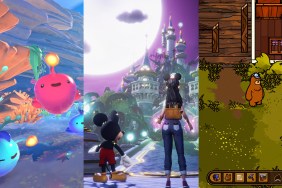Earlier last week, I finally got my hands on the Japanese version of Persona 5 and sat down to play it. After extended delays and a very long wait, I couldn’t believe this day finally came. I had very high expectations of the content that Atlus planned on delivering and I have not been disappointed at all. My initial plan was to wait for the English release in early 2017, but I figured the game would be spoiled to me by then and decided to dip into the Japanese version. After all, it’s been 8 years since the last major installment in the Persona series and I’ve been itching to play another.
I have very fond memories of the first time I played Persona 4 and the refreshing gameplay I experienced in comparison to the average Japanese RPG game. Since then, I have discovered and played through numerous SMT/Persona games, ranging from Nocturne to Persona 4 Ultimax. With that said, the world of Persona 5 has a remarkable scope that expands beyond anything previously in the series. After spending 15 hours playing through the first dungeon and then some more, I’ve come to the conclusion that Persona 5 is the strongest mainline entry so far and that’s saying a lot.
The newest chapter in the Persona series oozes with a distinct style, both in terms of gameplay, sound and visuals. As you’ve probably noted in the trailers, each part of the in-game menu is carefully designed with fluid animation in mind. The game soundtrack is just as catchy as it’s predecessor and I think Lyn Inaizumi did a terrific job with the vocals. Most of the songs contain layers of rock and acid-jazz mixed together, which really fit the vibe that Persona 5 is aiming for. Music is a very important aspect of every Persona game and you will probably end up listening to the same battle theme over and over again, but I promise it won’t get boring. Don’t even get me started on the remarkable boss themes that are sure to leave you finger drumming at the end.
When you first start off, the game will introduce you to an assortment of tutorials that will go over the new gameplay mechanics which are introduced in Persona 5. You will constantly be given a tutorial when doing something for the first time, such as playing baseball or fusing your persona’s, so it may take a while for the story to ramp up. While I am not fluent in Japanese, I was still able to follow through some of the story dialog due to various members of the Persona community helping out. I also took the time to watch translated gameplay streams, videos and download the handy Google Translator mobile application. I’m sure that I will enjoy the story a lot more once the game releases in English, but so far this has been a positive experience.
This time around, the story has a much more brooding narrative. While I won’t go into details due to spoilers, I can tell you that I’ve seen some of the ending scenes and they’re harsher than the entirety of Persona 4’s murder mystery. Persona 5 portrays darker themes such as self-isolation, sexual harassment, graphic violence and betrayal. Both Anne and Ryuji are very likeable characters and develop their own personality over time. I’m slowly becoming a fan of Morgana as well, due to his adoring personality. Morgana’s voice actor pulled off an amazing job and I really hope Atlus has plans for dual audio later down the road with the English release.
Having the game take place in Tokyo is a ballsy move considering how much potential there is for content, but I think Atlus almost nailed the setting. The sprawling streets of Tokyo are littered with dozens of shops that you can enter and unique NPC’s going on about their daily lives. You can hear a variety of background chatter and ambience as you turn the corner, which should be enough to make the native Tokyo resident feel right at home. During night time, the city is shimmering with colorful lights and billboards, including some that hold real-life advertisements. Talk about immersion. 
There are multiple districts in Persona 5’s fictional Tokyo, but my favorite is Shibuya because it holds the highest number of side-activities. Some of the activities you can partake in include going to the movie theater with a social link, working a part-time job, spending time at the arcade, eating at a restaurant and much more. Your stats will build up as you continue to tackle more side-activities. Social links have a greater amount of depth this time around, thanks to the new buddy texting system. Fellow party members will often text you to hang out and do things with them, then later follow up with a few texts about how much fun they had. Conversations include a multiple choice dialog tree and the replies you receive will be different based on what you answer with.
The combat in Persona 5 has been considerably refined for the greater good. Your party members come equipped with a Pistol that will shoot different kinds of bullets and weaken enemies. Once you weaken every enemy on the screen, your party can perform an all-out-attack. Each character has a very snazzy AoA animation, but my favorite is Morgana’s victory pose. Luckily for me, the combat system breaks the language barrier and makes dungeon crawling a breeze. The battle system is fast paced and load times are almost non-existent.
Weapons in Persona 5 are priced higher than previous games, but making money doesn’t feel like a grind at all. Upon completing the first dungeon, I had over 70,000 Yen left after upgrading the primary weapon and armor for all of my party members. I really admire the positive changes made to enhance the dungeon crawling experience and most of them revolve around the newly introduced “Action” mechanic. By using this, you can climb ledges, crouch against corners and perform surprise attacks on enemies. You can also use the addition of stealth to quietly sneak past enemies and then run to the next area. There are numerous puzzles spread throughout the dungeons and sometimes you have to observe your surroundings in order to proceed.
Overall, the time I’ve spent in Persona 5 has been a much more exciting experience in comparison to the previous Persona games. This is the kind of game that any RPG fan can pick up and enjoy, as well as a huge contender for the game of the year title. While I don’t have a slew of gripes to address, I do wish the configuration menu contained more options, particularly to turn down the individual volume of music and sound effects so they won’t overlap as often. A big part of me is looking forward to replaying Persona 5 next year and talking about it in greater detail. Until then, I’m going to continue my blind playthrough and try to avoid major spoilers at all costs.











